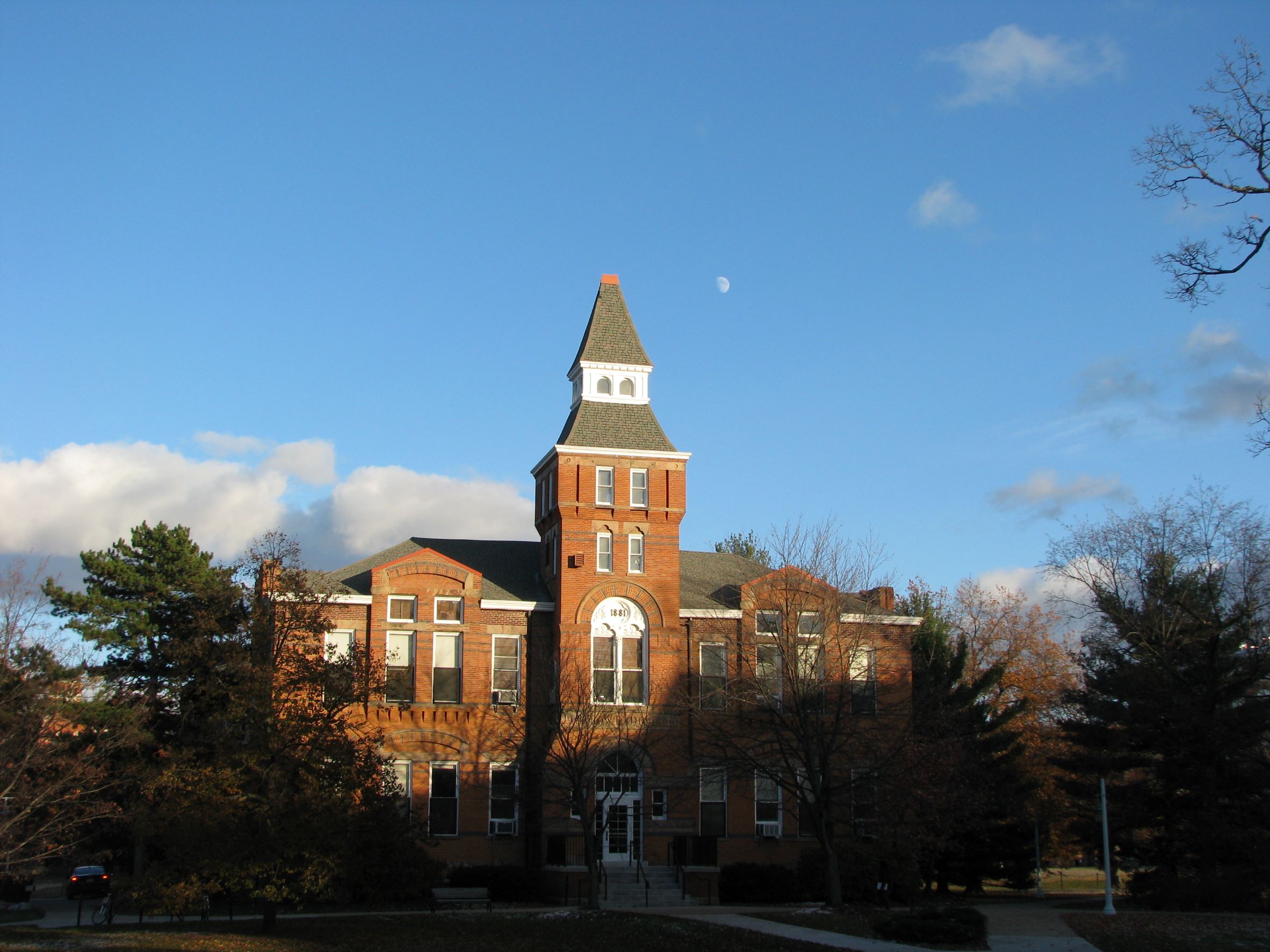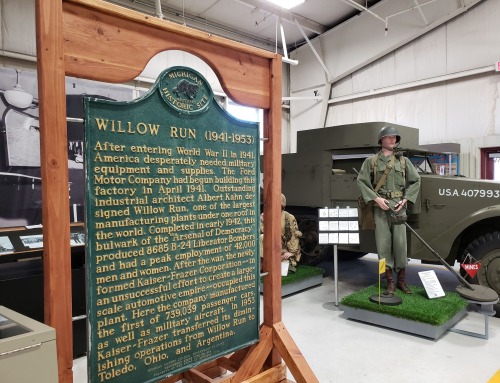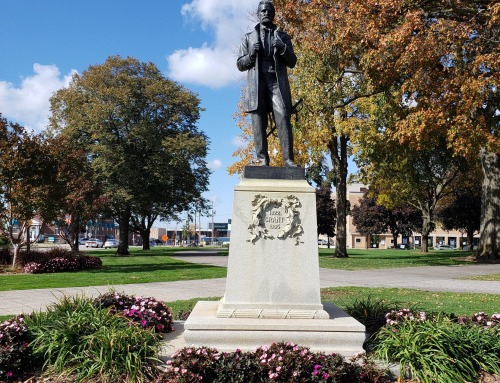Michigan has long been a farming community. In the mid-1800s, it was determined that institutes of higher education that focused on teaching practical agriculture, science, military science, and engineering would be productive. This was inspired, in part, by the industrial revolution and changing social classes of the entire country. In 1850, the Michigan Constitution decided to create an agricultural school and by 1857, the state opened its first land grant college for farmers. The Michigan Agricultural College became a prototype for future land grant institutions.
Where To Put It
When Michigan’s legislature was making decisions on the creation of the school, the president of the University of Michigan, Henry Tappan, attempted to convince officials to build the agricultural college in Ann Arbor, as a part of his university. The secretary of the Michigan State Agricultural Society, John C. Holmes, disagreed. Holmes argued that the young farmers would not get the attention they needed in the established university.
On February 12, 1855, Michigan Governor, Kinsley S. Bingham, signed a bill establishing the nation’s first agriculture college. It was initially known as the Agricultural College of the State of Michigan. Planning started, and classes began on May 13, 1857. There were three main buildings with faculty members, and 63 male students. The first president was Joseph R. Williams, who had graduated from Harvard. He was a self-made gentleman farmer and prominent Michigan attorney. Williams was passionate about higher education for the young men who wanted to learn more about farming.
Initial Faculty and Curriculum
The college hired several well-educated faculty members. They were men who had studied in east coast schools, and many had medical degrees. Though their original buildings were cramped, the faculty was able to develop laboratories with new and innovative equipment, such as microscopes. Faculty worked together to build a curriculum that included science, liberal arts, and practical vocational courses. This was very different from most colleges at the time.
Since the Michigan Agricultural College was the first of its kind, it used several medical schools as a guide. Unlike the majority of the colleges of the day, Williams did not include Latin and Greek classes. This was a relief to the young men from the country who had no prior knowledge of these languages. The college also required three hours of manual labor every day, which helped students offset their expenses. It was also an ingeni0us way to campus develop an infrastructure. Students also learned scientific principles through practical application.
The school was off to a great start. Unfortunately politics interfered, especially at the State Board of Education. In spite of the humble backgrounds of the students, and Williams pushing for higher education for all people, the Board believed the college was elitist and extravagant. Even some farmers began protesting against the college. They feared the college’s strong scientific curriculum would educate their sons away from the farm. Some even called for the college to be abolished. Succumbing to public pressure, Williams resigned after just two years as president. The Board reduced the curriculum to a two-year, vocation-oriented farming program. This move resulted in a drastic reduction in enrollment almost overnight. Soon there were severe financial problems, placing its entire existence in jeopardy.
Reorganization Act of 1861
Williams continued to work for the state of Michigan. He was elected to the Michigan legislature and rose to the rank of lieutenant governor but never forgot about the Michigan Agricultural College. He helped pass the Reorganization Act of 1861, which mandated that the college have a four-year curriculum. It would also have the power to grant degrees comparable to those of the University of Michigan, such as master’s degrees and years later, doctoral degrees. Under the act, the new State Board of Agriculture took over from the State Board of Education in running the institution. They also adopted the more pronounceable name of State Agricultural College.
Class of 1861
State Agricultural College’s first class graduated in 1861, the same year the Civil War broke out. Also in that year, President Abraham Lincoln signed the Morrill Land-Grant Colleges Act. This was the first instance of federal funding for education. Unfortunately for Williams, who had done so much for the fledgling college, he died on June 15, 1861.
Beating Back the Wolverines
In 1862, the Board appointed Theophilus C. Abbot as new president of the College. The soft-spoken man took charge and ran the school for 22 years. It was not an easy time to be president of the new college. The Morrill Act brought much attention to the school, especially from the University of Michigan once again. The university brought a bill before the Michigan congress to merge the two schools and move the Lansing facility to Ann Arbor. The University of Michigan believed that it was necessary to share the Morrill Act income with their college, which was struggling at the time.
There was support across the state for this merger, but those opposed pointed out that Ann Arbor didn’t have adequate facilities. Consequently, moving there would be more expensive than any benefits it would bring. In 1863, the legislature voted down the proposal. It returned to the table to vote again in 1865, 1867 and 1869. This constant threat of a merger kept the legislature from approving any new money for campus improvements in Lansing, which left the college only one boarding hall and a limited capacity for enrollment.
Early Notable Advancements
Since President Abbot couldn’t expand the size of the college during the 1860s, he focused on the quality of the education provided. Abbot wanted to continue the vision of former president Williams to focus on the “whole man” approach to higher education. By the 1880s, the mixed liberal and practical curriculum included a botany professor who invented a better strain of hybrid corn using cross-fertilization. The professor, William Beal even corresponded with Charles Darwin and advocated for the laboratory teaching method. Beal conducted his classes in the first botanical laboratory building on an American campus.
Another exemplary faculty member at the time was an alumnus-turned-professor. Many refer to him as the Father of American Horticulture, but his name was Liberty Hyde Bailey. Bailey was the first person to raise the study of horticulture to a science equal to botany. Walter B. Barrows, a nationally-respected ornithologist whose treatise, Michigan Bird Life, is widely considered the most comprehensive study of the subject, joined the faculty during this time as well. Another notable faculty member was Rolla C. Carpenter, a building construction specialist as well as a pioneering HVAC engineer.
During the late 19th Century, the college became very well-respected, in spite of its isolated location, limited student housing and small enrollment. Many graduates became esteemed in their careers, with several leading or teaching in other land grant colleges in the country. Though the school continued to emphasize scientific agriculture, its graduates went into a wide variety of scientific professions.
Famous Alum Emerge
In 1878, President Abbot reported that State Agricultural College graduates showed that a love of knowledge had been infused into them by frequently “returning to study or by resorting to other institutions of learning to continue their studies.” Alumni went to the University of Michigan, Cornell, Yale, Harvard, and even England, France and Germany to continue their studies. Graduates included prominent early 20th century astrophysicist and associate of Albert Einstein, Charles E. St. John, famous muckraker journalist and Pulitzer Prize winner, Ray Stannard Baker and pioneering education reformer, William Chandler Bagley. The college continued growing in other ways, and in 1885, in order to fill out its mandate as a Morrill Act institution, the college established a mechanics program which became the its first full-fledged, degree-granting engineering program.
In the 1870s, foreign students began coming to the United States just to attend the Michigan State Agricultural College. By the 1880s, they were a significant presence on campus. In 1887, six out of 312 students were Japanese. Two of these students included Michitaro Tsuda, who went on to become a member of the Japanese emperor’s Privy Council, and Minakata Kumagusu, a prominent Japanese environmental scientist. Michigan Agricultural College graduates of all kinds were making a difference. The college also became co-educational in the 1870s. Then came the first football season in 1884, using the nickname, Aggies.
Bringing Education Home to the Farm
Though the college was successful, many Michigan farmers were still afraid that a college education would discourage their children from returning home to do actual farming. The ever-innovative President Abbot helped win them over by holding Farmers Institutes in rural communities across the state. The first was held in 1876, and school professors shared both experimental and practical information with Michigan farmers. Through the program, Abbot converted many skeptical farmers into enthusiastic supporters.
Once again, the school in Lansing had a concept that led to nation-wide legislation. The Hatch Act of 1887 provided federal funding for agricultural experiment stations operated by each state’s Land Grant college. You can still see these today across the state as MSU Extension sites.
Women and Minorities Admitted
As previously noted, the College first admitted women in 1870. Unfortunately, the school’s relative isolation and lack of women’s living quarters hindered the coeducational enrollment for decades. The few women who enrolled were locals from Lansing who made the three-mile trek by stagecoach over the unpaved roads. Out of town students could board with faculty families. The women learned the same scientific agriculture courses as men, with the exception of practical agriculture.
Finally, in 1896, the college became one of only fourteen institutes of higher learning in America to adopt and meld a home economics curriculum within the liberal arts and sciences program. This led to more females enrolling. They also relocated male students from the old Abbot Hall dormitory to allow for a greater number of women to enroll in the school.
In 1899, the State Agricultural College admitted its first African American student, William O. Thompson. After graduation, Thompson taught at what is now Tuskegee University, which had been founded and headed by Booker T. Washington. A few years later, Myrtle Craig became the first black woman to enroll at the College. She graduated with the Class of 1907, and received her degree from U.S. President Theodore Roosevelt, who was the commencement speaker for the Semi-Centennial celebration of the school’s opening.
The MAC Name Change
The area around the college and Lansing itself continued to grow, and the City of East Lansing incorporated in 1907. Two years later, the college officially changed its name to Michigan Agricultural College (MAC), as by that time, there were many other agricultural colleges across the country. Though the college had been around for over fifty years and was a widely recognized leader of the Land Grant Colleges, some individuals within the state legislature opposed more expansion. Some believed its agricultural college should not have engineering programs because these duplicated the University of Michigan’s offerings. However, the Morrill Act had originally mandated that Land Grant Colleges teach engineering, or as it was known at the time, mechanic arts. MAC had developed civil and electrical engineering programs to complement the original mechanical program of 1885.
Those who wanted MAC’s agricultural program to be absorbed into the University of Michigan had another chance to bring their case to the legislature in 1916 when a fire destroyed MAC’s engineering hall. Lansing automobile tycoon Ransom E. Olds solidified the program on the East Lansing campus with a gift of $100,000 in 1917 for a new engineering building to be built directly upon the foundations of the burned hall. This donation was the institution’s first significant private gift for a building. Naturally, they named the building Olds Hall. It is still standing, but now houses MSU’s University Relations division as well as classroom space.
More Than an Agricultural College
In 1914, the US Congress added a third part to the Land Grant college mission. In addition to education and research, the Smith–Lever Act provided federal funding for a system of state cooperative extension service. The new mandate resulted in MAC expanding its curriculum beyond agriculture and engineering, such as their liberal arts coursework. By 1925, the college had expanded to the extent where it petitioned the state of Michigan to remove the word “agriculture” from its name. There was again opposition. As a compromise, the state government decided to call it Michigan State College of Agriculture and Applied Science.
In 1941, Secretary of the State Board of Agriculture, John A. Hannah, was appointed president of the college. He began the largest expansion in the school’s history. The growth was aided by the 1945 G.I. Bill, which helped World War II veterans fund post-secondary educations. While Hannah worked on increasing enrollment and building more residence halls for these students, he also raised the school’s reputation from a regionally-respected college to a nationally recognized research university.
In the school’s centennial year of 1955, the State of Michigan officially designated the school as a university. Michigan State College became Michigan State University of Agriculture and Applied Science. The State of Michigan did not allow the university to remove the “agriculture” part of their name until the ratification of the Michigan Constitution of 1964. Since then, the school has been known simply as Michigan State University. Despite the word agriculture being dropped from the name, the university continues its tradition of being a leader in education and research of all agribusiness.







Leave A Comment
You must be logged in to post a comment.